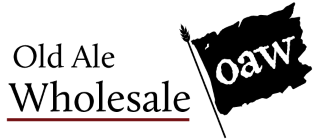Description
Next in the story of the fabled IPA? The Brut IPA. This style gained massive popularity almost overnight. Originating from a brewery in San Francisco in 2017, the Brut IPA utilizes special techniques and enzymes that allow this style to easily ferment down to, or even under, a specific gravity of 1.000. This IPA style is brewed with restrained bitterness, allowing the hop aromatics and flavor to be highlighted in a unique, subtle way.
A simple malt bill dries out into a complex bouquet of hops. Together, they create a light, effervescent beer with all the big aromas and flavors of your favorite bubbly treat. The pairing of (Nelson) Sauvin and (Hallertau) Blanc results in a similar flavor and aromatic profile as the Sauvignon Blanc wine grape. This hop combination shines thanks to the light, dry finish making this IPA reminiscent of a dry sparkling white wine. Brut DryPA is our take on this skyrocketing style, and it does not disappoint.
Brewing Notes
- Style: Specialty IPA
- Fermentation Range: 65 - 70 F
- Original Gravity: 1.050
- SRM: 4
- IBUs: 25
- ABV: ~6.8%
Tasting Notes
- Aroma: Prominent hop aroma of grape, gooseberry, and slight berry with a clean malt profile of freshly baked crusty bread.
- Appearance: Golden hue with medium-high carbonation resulting in a firm and persistent brilliantly white foam head.
- Flavor: Slightly bready malt flavors with a hint of biscuit. The flavor is dominated by wine-like grape flavors of gooseberry, white peach, and slight passion fruit. Restrained bitterness.
- Mouthfeel: Low body and incredibly drying on the palate. Crisp and refreshing.
Brad’s Notes:
“Ever since I saw an article about this style of beer and the techniques and ingredients used to make it, I just had to go for it. There is a certain allure to the challenge of achieving incredibly high attenuation to make a really dry beer. Sure, there are some yeast strains out there that really chow down on a beer, but those are mostly Saccharomyces cerevisiae var. diastaticus strains (think Lallemand Belle Saison). The trick to this recipe is not a var. diastaticus yeast strain, rather specialized enzymes.
During brew day, an alpha-amylase enzyme is added to the mash (or steeped in a malt extract based wort) at a relatively low mash (or steep) temperature. Since this specific alpha-amylase enzyme is very active right around 145 degrees F, it makes a perfect companion to the beta-amylase present in the malt, yielding a highly fermentable wort. Once the boil has been completed - more on that later - the wort is transferred to a fermentor, aerated/oxygenated and a neutral ale yeast is pitched as normal. Now, here is where the magic happens - a second enzyme, Amyloglucosidase, is added directly to the fermentor. This particular enzyme is a monster at breaking down starches (dextrins, etc) in the wort by hydrolyzing both 1-4 and 1-6 starch linkages and turn them into glucose. Viola, extra fermentables for the yeast to work on! As a result, the final beer is very light in body and mouthfeel, and due to the lack of residual starches and the bounty of fermentable sugars, my test batches all finished under a specific gravity of 1.000. It is pretty crazy to imagine a beer with an OG of 1.050 nearing 7% ABV, but it does! ”
Now, the boil. Yes, this beer is called a Brut IPA, but lacks the prominent bitterness of what IPAs traditionally have. This recipe calculates out to 25 IBU, but what it lacks in bitterness it makes up for in flavor and aroma. The hops used - Nelson Sauvin and Hallertau Blanc - are described as having white wine-like sensory characteristics so they are of course the natural choice for this recipe in my mind. Utilizing only a single whirlpool hop addition after the boil (aka hopstand) makes for a huge hop flavor and aroma while creating only a little bit of bitterness, and dry hopping serves to bolster the aroma. Upon packaging, target a carbonation level close to 3 volumes to create an effervescence akin to sparkling white wines. I had fun with this one, and I’m sure you will too. Because science!
PS: One word of warning - be absolutely sure to give this beer a lot of time in the fermentor. Because of the added enzyme on the cold side, it will continue to work as long as there are starches present. If this beer is bottled too early, the enzymes and yeast will continue to do their thing, and that can cause continued fermentation within the bottle, which can lead to over-carbonation and possible bottle bombs. Nobody likes that.”
Looking for the All Grain Version?
Payment & Security
Your payment information is processed securely. We do not store credit card details nor have access to your credit card information.




